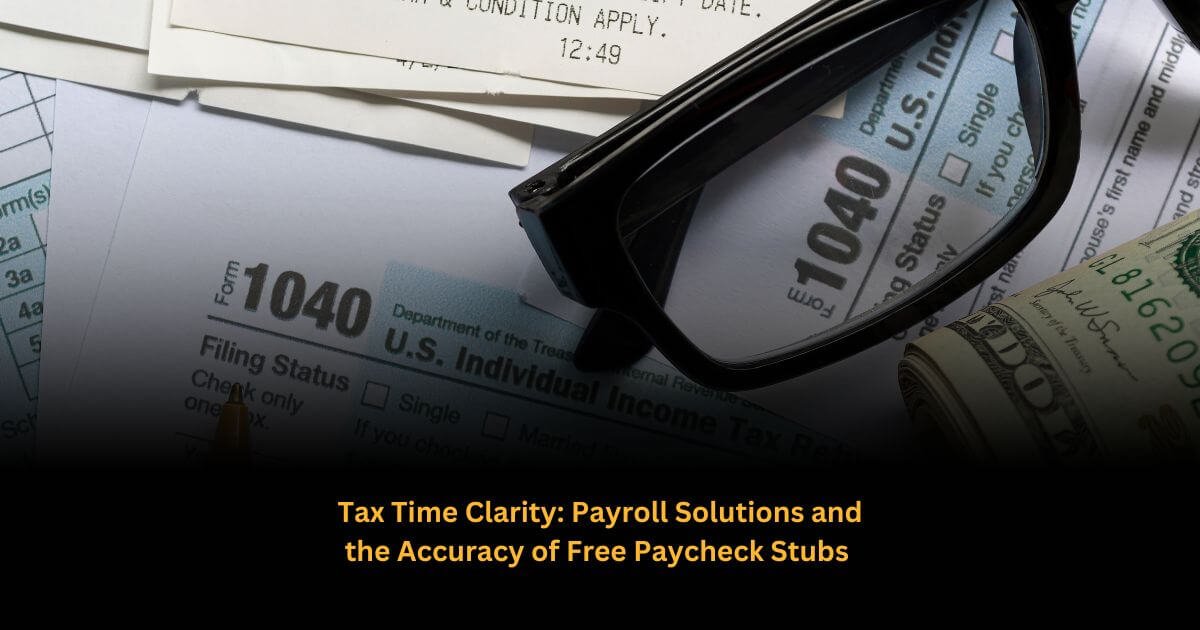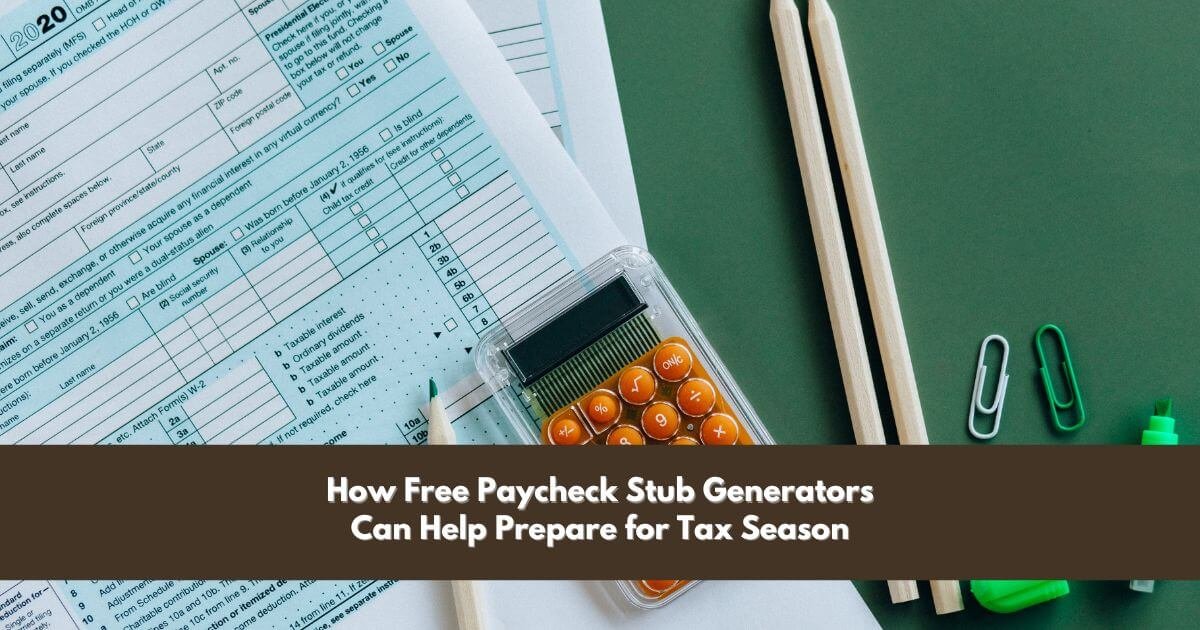A pay stub is a document that shows details about an employee’s earnings and deductions. It is used to inform employees about the various deductions that are made from their gross pay to calculate their net income.
Pay stubs can be printed on paper, sent by email, or accessed online, especially when the payment is made via direct deposit.
What Information Will Go on a Pay Stub?
A pay stub is an important document that showcases how much money an employee earns and where it goes. It breaks down the total earnings and all of the deductions, giving a clear picture of the employee’s take-home pay. Understanding the details on a pay stub helps employees keep track of their earnings and deductions.
- General Information: Necessary information includes basic identifying information such as the employer’s and employee’s names and addresses, as well as the employee’s social security number.
- Pay Period and Year-To-Date: The pay stub also mentions which days the employee worked, how much they were paid each day, and their total hours. The year-to-date (YTD) value on a pay stub is the total amount the employee has earned so far for this year.
- Gross Wages: Gross wages are a fancy term for the total pre-tax amount that an employee earns based on their pay rates before various deductions are applied. Gross earnings include:
- Regular Wages: Are the wages that an employer pays during a payroll period at an hourly or fixed rate.
- Commissions: How much an employee makes to finish a sale. Employers then add these commissions to the employee’s salary.
- Bonus: Employers now distribute bonuses, which are added to employees’ wages as a reward for performance. Bonuses are different from incentives because they are not fixed to a specific plan.
- Sick Pay: Commonly known as paid sick days, sick pay refers to an employee’s earnings for the time off when they are unable to work due to injury or disability.
- Deductions: A pay stub also showcases how much has been subtracted from an employee’s gross pay to be added to their net pay. There are a few deductions that you should be aware of:
- Tax Deductions: Tax deductions include several payroll taxes, such as local income taxes, federal taxes, FICA tax, and more. These deductions are deducted from the gross earnings.
- Employee Benefits Deductions: Employee benefits deductions include health insurance, life insurance, and other deductions.
- Voluntary Deductions: Payment that is withheld for employee deductions is considered voluntary. Voluntary deductions include retirement deductions, which do not always correlate to employer contributions.
- Net Pay: Is the final piece in the puzzle. It is commonly included on a paystub or the amount that an employee earns after federal income tax deductions, state income taxes, and social security payments, which are then deducted from the gross pay.
Section 1: What is a Payroll Check Stub?
Definition of a Payroll Check Stub:
Pay stubs, commonly known as check stubs, are a part of a paycheck document that lists the details about the employee’s pay. It showcases the wages earned for the pay period and year-to-date payroll information.
The check stub also shows taxes and other deductions that are taken out of an employee’s earnings. Then, the pay stubs show the amount the employee receives.
The Purpose of a Check Stub for Both Employees and Employers
A pay stub is an essential piece that is extremely important for both the employer and the employee. Below is an overview:
Employees:
- Proof of Income: Employees can use a pay stub to verify their earnings for purposes such as applying for loans or filing taxes.
- Transparency: It provides a detailed description breakdown of earnings, deductions, and net pay, ensuring employees understand how their pay is being calculated.
- Record-Keeping: Employees can keep their check stubs as part of their financial records, such as for tax filing.
Employers:
- Legal Compliance: In most sectors, providing a detailed pay stub is a legal requirement to ensure transparency.
- Documentation: Check stubs serve as proof of payments made to the employees, which is essential for accounting purposes.
- Employee Trust: Offering accurate pay stubs builds trust by showcasing that the wages are calculated fairly and accurately.
Section 2: Earnings Information on a Check Stub
Gross Pay:
Your employee’s gross wages are commonly known as their pre-tax wages. This is known as the total amount of money your employee has earned before any federal income tax, state income tax, or any other deductions are removed from their pay.
If you have the hourly working hours, their gross wages are then calculated by multiplying their hourly rate of pay by the number of hours in any given pay period. For example, if you have an employee who has an hourly rate of $20 and works 80 hours in a pay period, then their gross wage would be $1600.
If you have a salaried employee, you can calculate their gross wages by dividing their salary by the number of pay periods per year. For example, if you have an employee with a salary of $52,000 and then pay them weekly, their gross pay per period would be $1000.
Deductions:
Gross pay is how much your employees have earned, but that’s not how much they take home each pay period. Deductions that should be included on an employee’s pay stub include the following:
- Income and payroll tax deductions
- Deductions for your employee benefits
- Voluntary deductions
- Involuntary deductions
Net Pay:
Net pay, commonly known as take-home pay, is the amount left after deducting taxes and deductions from the employee’s gross pay. If the employee receives nontaxable income, include that income after subtracting all the taxes and deductions. After subtracting taxes and deductions, you have to pay the employee’s take-home pay. The net pay is the total amount you pay the employee.
Section 3: Year-to-Date (YTD) Totals
Year-to-date (YTD) is the amount of money your company has spent on payroll since the start of the fiscal year, up to the current payroll date. To calculate YTD, you should consider your employee’s gross income, which is what the employee earns before subtracting taxes and deductions.
YTD might also include the amount of money paid to freelance or independent contractors. It is crucial to note that an independent contractor is not on your payroll; they are self-employed individuals hired for a specific job, but you need to include your YTD.
Section 4: Voluntary and Mandatory Deductions
Payroll deductions are specifically to be taken out of a paycheck by the employer before it is issued to the employee. Deductions are generally made on the employee’s pay stub, and the amount subtracted from their gross pay is shown.
These deductions are classified into two main categories:
- Voluntary Deductions: These deductions are then made from an employee’s paycheck at their request and typically include contributions to retirement accounts and health insurance premiums. Employers should obtain written consent from the employee before making voluntary deductions.
- Mandatory Deductions: Employers are legally required to make these from each paycheck, regardless of employee consent. Examples include federal and state income taxes, Social Security contributions, and union dues.
Garnishments or Other Mandatory Deductions
Payroll garnishments are court-ordered deductions that allow a creditor to take money directly from an employee’s wages due to a legal obligation.
The most basic reasons for wage garnishments are child support or student loans. The law mandates these deductions, which should be handled with precision to avoid costly errors.
Type of Garnishments:
Below are some of the garnishments:
- Legal Garnishment: Legal garnishment is the result of a court order for child support or student loans. These garnishments are crucial, so they take preference over other types and should be taken into consideration according to the running payroll needs.
- Voluntary Wage Assignments: These are agreements between the employee and a creditor allowing the creditor to collect payments directly from the employee’s wages. Though not court-ordered, these assignments must be handled carefully to ensure compliance with the agreement.
- Compliance With State and Federal Laws: Employers must comply with both the state and federal laws governing garnishments. This includes understanding the maximum allowable garnishment amount while making sure that the employees are left with a stable income to meet their basic needs.
Payroll Deductions:
A payroll deduction is a specified amount of money that is taken out from an employee’s gross earnings to cover the various mandatory deductions, voluntary contributions, and benefits. Mandatory deductions include state and federal taxes, social security, and Medicare contributions.
Common Types of Deductions:
- Mandatory Deductions: Mandatory deductions include federal and state laws, social security, and other legally required withholdings. These deductions are non-negotiable and should be accurately calculated based on the employee’s earnings.
- Voluntary Deductions: Voluntary deductions are selected by the employee during the benefits enrollment process and might include contributions to retirement plans and other benefits that your firm may make available.
Key Takeaway:
A payroll check is a reliable generator that provides employees with a transparent breakdown of their earnings, deductions, and net pay. For businesses, accurate and transparent payroll stubs ensure that the pay stub information is correct.
Effortless Payroll Solutions: Try Our Canadian Paystub Generator
FAQ's
What are the basic details every payroll check stub must include?
+
Every pay stub should include the employee's name, employer’s name, pay period, gross pay, net pay, and tax withholdings.
Should deductions be itemized on a pay stub?
+
Yes, all deductions such as federal and state taxes, Social Security, Medicare, and any benefits or retirement contributions should be clearly listed.
Is it necessary to include year-to-date (YTD) totals?
+
Including YTD totals for earnings and deductions helps employees track their income and taxes over the year, and it's required in many states.
Can a pay stub include payment method details?
+
Yes, many stubs also show whether payment was made by direct deposit, check, or other methods, along with the transaction date.






